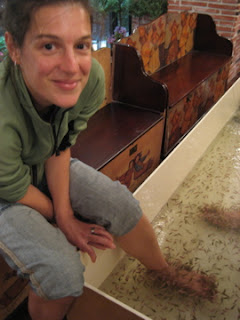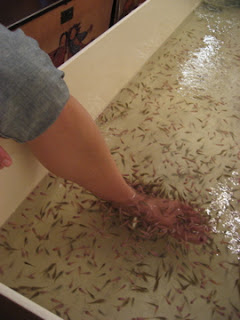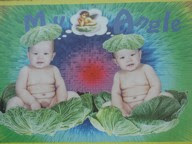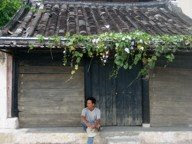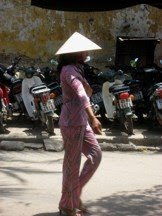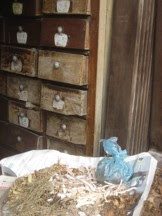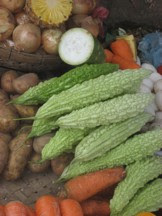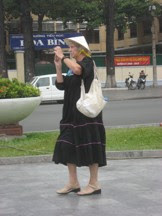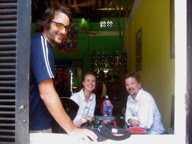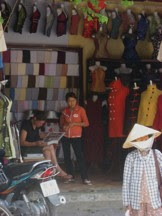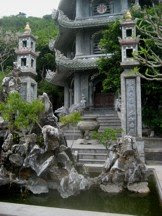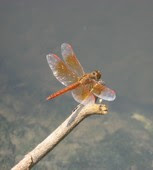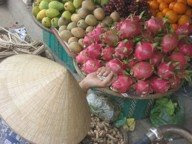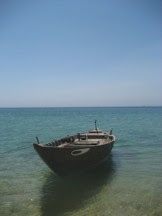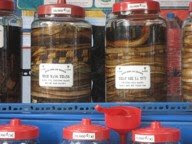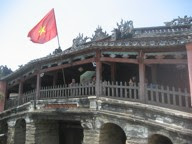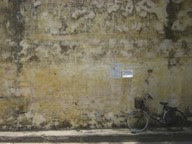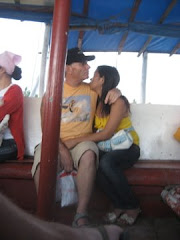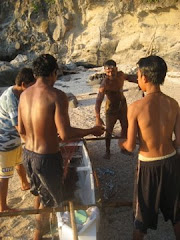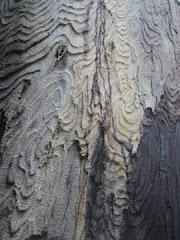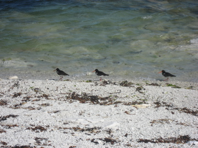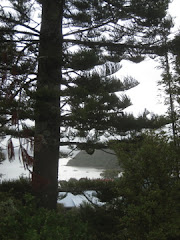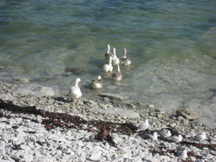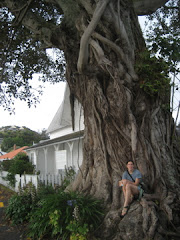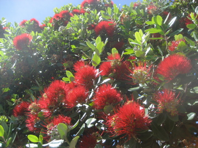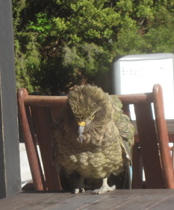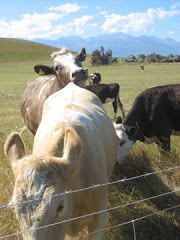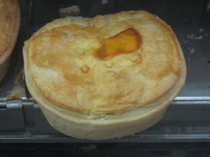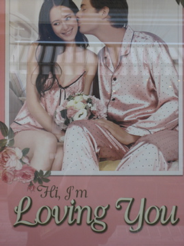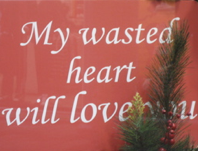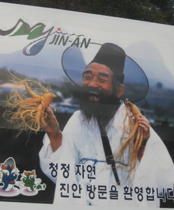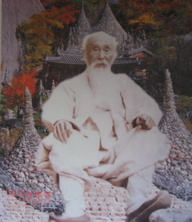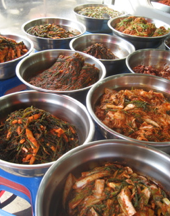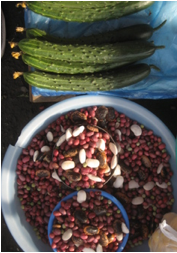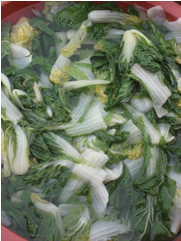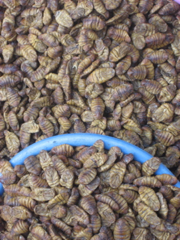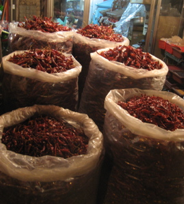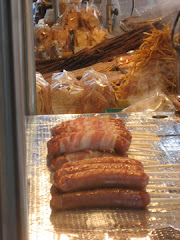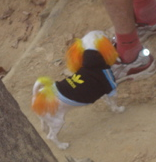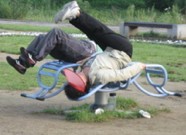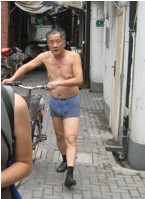We got back late last night from Shanghai, that notorious city that the West built in the East. (Well, to put it that w
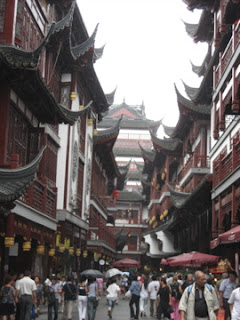
ay is to look only at the heart of the city, but it would take a longer trip than four days to do an

y
legitimate exploration of the parts of Shanghai that predate the economic boom and takeover by westerners in the mid-19th century.) It was a funny place for a first glimpse of China: on one hand, there are enough familiar elements to make it digestible for westerners in their first days of Asian travel, but on the other, unless you are Paris Hilton, sights like Prada and Louis Vitton stores on every other block don’t necessarily make you feel at home. The glitz is attractive, at least at first glance, but doesn’t do much to conceal the toxic haze that hangs over the city, even while the nearby countryside enjoys crystal-clear blue skies.
But I’m b
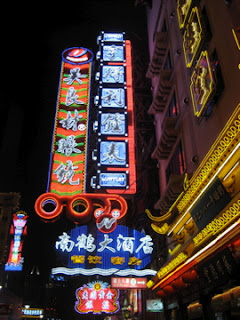
eing unfair. After a few days there, my overall assessment of Shanghai is that its main tourist areas (the shopping areas on Nanjing Donglu, the main strip on HuaiHai in the French Concession, Yuyuan Bazaar, the Bund) don’t do much for me. They’re one part Gucci, one part Disney, one part pushy colonial Europe, and one part roaring, strapping capitalism and consumerism gone wild. However, once you take a step off your sightseeing agenda map, you’re confronted by one of two things: either a seedy, grimy, dilapidated city center grappling with urban decay and all the regular problems big cities have, or else a young, hip, vibrant, cosmopolitan metropolis with good food, good bars, good (small, independent) shops and general good living. Both of these are present and emerge visibly after a few days and some long walks between recommended tourist destinations, and both are preferable to the tourist destinations, if you ask me.
Absent in all this, it may seem, is the “authentic China” every tourist is probably seeking, and I know that’s there, too; the trick is to redefine authentic in a way that suits a coastal cosmopolis of 17 million. There is no way that a city like Shanghai won’t in many respects resemble cities like New York, Paris, or London, and that has nothing to

do with the West infiltrating the East – it’s just a matter of huge cities attracting people and things from all over the world, and gradually blurring their cultural identities and converging on each
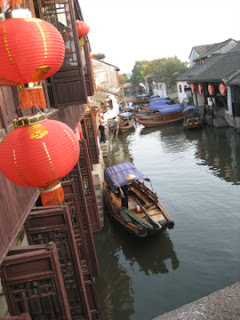
other. And naturally, that’s why it’s senseless to visit Shanhai and feel that you know much about China, so the net result of this Chuseok getaway was to make me even more eager to see more of the country – particularly the interior. We had a chance to see a bit of China’s old village life when we visited a 900-year-old water town, Zhouzhuang, about an hour outside of Shanghai. This place was practically too charming to be real, so it would probably be a mistake to equate its painstakingly restored canals and bridges with regular small-town China, but it was nice to see an area that hadn’t been parceled up and developed by greedy European superpowers in the 1800’s.
It’s odd that I made it through three paragraphs without mentioning the huge visual impact that Shanghai makes when you arrive there for
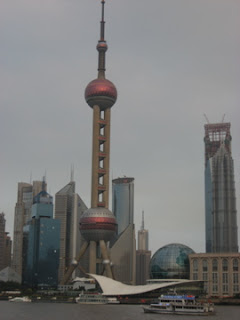
the first time – the skyscrapers, as you can see in photos, are otherworldly. The city must have more than 20 buildings that would be THE famous building in almost any other city I’ve visited. The new area, Pudong, is the most exceptional in this respect – I don’t think they’ve built anything on that side of the Huangpu river but skyscrapers – but even deep in Puxi, on the western “Old Shanghai” side of the river, it is easy to stumble from so much staring upward in awe. After all of my bitching about fancy malls and Gucci stores, you’d think I’d be disgusted by these colossal monuments to capitalism that are literally taxing the city’s foundations and causing it to sink into the ground, but no. I thought they were amazing, some of them truly beautiful (particularly the tallest building in China, the Jin Mao tower, which Chris and I were able to explore on two separate occasions – next time we go to Shanghai, we’re splurging on its Hyatt, the highest hotel in the world), and others ridiculous (i.e. the Pearl tower, the one with those silly pink balls that’s in the foreground in most of the photos) but still striking.
So, this post is getting unappealingly long, but anyone who reads it and doesn’t know much about China may be confused by the same thing that baffled me the entire time I was there. Isn’t China a communist country? I’ve been trying to figure that out, and my conclusion is that I don’t really know what a communist country is. China, I believe, still calls itself communist – the nation is founded on and still maintains its support of “communist ideals” and is governed by the Communist Party – but in effect it is neither communist nor even socialist at this point. Free enterprise is the rule, with Chinese citizens owning their own property and controlling their own income. From what I hear, taxation is quite low, much lower than in the US and many other nations. And everything we saw in Shanghai see
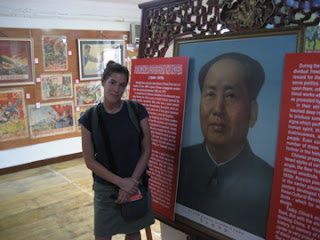
med to support this fact – compared to Cuba, for example, a nation that still acts and feels communist in many respects, China seemed as capitalist as any country I’ve seen. The fancy malls and fine restaurants I’ve already mentioned were certainly not built solely for the tourists; on the contrary, they were frequented largely by Chinese. I read a bit on the Internet trying to find an answer to this question, and learned that Chinese citizens are not restricted from traveling abroad, either (not that this is a prerequisite of communist leadership, but it was one of the facets of the Cuban system that we found shocking and objectionable). Apparently, after Mao died, his successors started the economic reform that has enabled China to become the fourth-largest economy in the world, and that allows the Chinese to benefit directly from the profits their industry is generating (although that last part is kind of a chicken-or-the-egg statement . . . their ability to benefit may have caused the profits to be generated in the first place, right?).
Anyway, in the interest of posting this before January, I’ll stop here. Obviously, I’ve barely begun to learn about China, and with any luck our plans to spend a few weeks there next June will pan out and we’ll have more first-hand education. I had meant to say a few things about Chinese characters and our brief introduction to them, but suffice it to say that if 90% of the Chinese are literate and can read those things, I have no doubt that they are capable of just about anything.
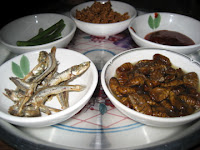 Mmm…..pupae and dried fish. A few weeks ago Jess and I had the opportunity to sample some classic Korean culinary dishes (ah, alliteration) at a local Suji restaurant.
Mmm…..pupae and dried fish. A few weeks ago Jess and I had the opportunity to sample some classic Korean culinary dishes (ah, alliteration) at a local Suji restaurant.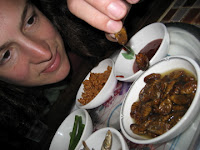 This particular restaurant we visited served stewed silkworm pupae and dried sardines as its appetizers. A little history here....from the first week of living in Korea we had heard about the silkworm pupae (called bundigie I believe) stew. We had seen the pots of pupae simmering among the other kettles and frying pans of the street food vendors. “Korean children love bundigie,” we were told time and time again, but to date, we had yet to give this dish a proper tasting. The pupae had finally found us.
This particular restaurant we visited served stewed silkworm pupae and dried sardines as its appetizers. A little history here....from the first week of living in Korea we had heard about the silkworm pupae (called bundigie I believe) stew. We had seen the pots of pupae simmering among the other kettles and frying pans of the street food vendors. “Korean children love bundigie,” we were told time and time again, but to date, we had yet to give this dish a proper tasting. The pupae had finally found us.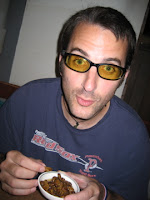 We both ate four pupae and washed them down with three dried sardines (along with several Hite beers and a bottle of soju). Hmm, taste? How to describe it? The silkworm had a squishy mealy feel, mildly gritty like eating a juicy prune. Its taste wasn’t horrible, but not particular scrumptious either, earthy and dirty with a hint of woody flavor. The sardines were crunchy and fishy beyond belief. Granted, I know I am a little biased here not being a huge seafood fan, but even Jessushi agreed that they tasted like swamp fish. Dried cardboardy swamp fish.
We both ate four pupae and washed them down with three dried sardines (along with several Hite beers and a bottle of soju). Hmm, taste? How to describe it? The silkworm had a squishy mealy feel, mildly gritty like eating a juicy prune. Its taste wasn’t horrible, but not particular scrumptious either, earthy and dirty with a hint of woody flavor. The sardines were crunchy and fishy beyond belief. Granted, I know I am a little biased here not being a huge seafood fan, but even Jessushi agreed that they tasted like swamp fish. Dried cardboardy swamp fish.







